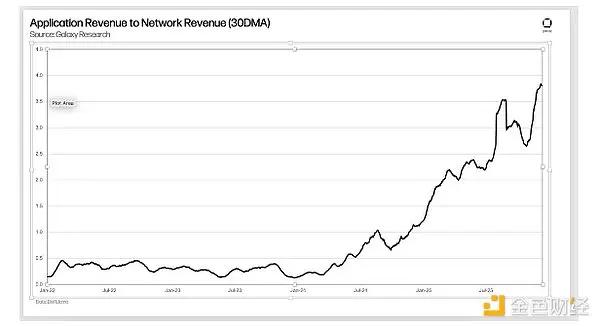The Origin of Strategic Reserves: The National Resource Game from Oil to Bit
In 1975, the United States established the Strategic Petroleum Reserve to address the oil crisis, which remains a core pillar of global energy security to this day. In 2025, this model was replicated in the crypto domain - the Trump administration proposed to include cryptocurrencies such as Bit (BTC) in the national strategic reserve assets, marking the US's transition from "oil hegemony" to "digital asset hegemony".
The starting point of this strategy can be traced back to July 2024, when Senator Cynthia Lummis submitted the "BITCOIN Act of 2024", planning to gradually establish a national reserve of 1 million BTC through annual procurement. Subsequently, Trump made "crypto strategic reserves" a core campaign promise, vowing to "make America the global crypto capital". As of March 2025, the US government has held about 200,000 BTC (worth about $21 billion), mainly from the confiscation of criminal assets by the Department of Justice.
Implementation Paths: The Dual-Track Game of Executive Orders and Congressional Legislation

The current advancement of the US crypto strategic reserves faces two main paths:
The "Blitzkrieg" of Executive Orders
Trump plans to use a presidential executive order to instruct the Treasury Department to directly allocate BTC using the Exchange Stabilization Fund (ESF), bypassing the congressional approval process. This path could be launched as early as the second half of 2025. The advantage is high efficiency, but it faces legal controversies: the ESF has traditionally been used to stabilize the US dollar exchange rate, and its use for purchasing crypto assets may trigger unconstitutional lawsuits.
The "War of Attrition" of Congressional Legislation
The "BITCOIN Act" needs to be voted on by both the Senate and the House, with core points of contention including:
Funding source: whether to use the fiscal budget or issue special-purpose bonds;
Reserve scale: the progressives demand 1 million BTC (about $100 billion) within 5 years, while the conservatives suggest limiting it to 1%-5% of the national debt assets;
Custody mechanism: the federal government builds its own cold wallet, or entrusts compliant institutions like Coinbase to manage it.
Global Market Turmoil: The "Nationalization" of Bit and the Struggle for Crypto Asset Pricing Power
The US crypto strategic reserve has triggered a chain reaction:
Violent price fluctuations: On March 3, 2025, after Trump announced that the reserve plan would include tokens like XRP, SOL, and ADA, the prices of these cryptocurrencies surged more than 15% within 24 hours;
Sovereign wealth funds follow suit: Norway's sovereign wealth fund and Singapore's GIC have begun to evaluate BTC allocation plans, driving the market capitalization of Bit to over $2 trillion;
Regulatory paradigm shift: The US SEC has abolished Accounting Bulletin 121, which hindered crypto development, and established a special task force to coordinate policies.
Notably, this strategy is reshaping the US dollar system: BTC reserves may become a "new anchor asset" beyond US Treasuries, consolidating the status of the global settlement currency through a "BTC-USD" dual-reserve model.
Controversy Vortex: Four Major Challenges of Strategic Reserves
Despite the promising prospects, the US crypto strategic reserve faces multiple doubts:
Technical risks: BTC private key management and 51% attacks pose potential threats to national financial security.
Legal conflicts: The Federal Reserve openly opposes government-led BTC hoarding, emphasizing that "monetary policy should not be tied to crypto assets".
Market manipulation suspicions: After the US government holds a large amount of BTC, it may use policy adjustments to influence the currency price, leading to the controversy of "being both the referee and the player".
International resistance: China and the EU have criticized the US "crypto unilateralism" and plan to promote global crypto regulatory coordination within the IMF framework.
Future Projection: Three Major Changes in Crypto Geopolitics from 2025 to 2030
The "Digital Gold" Standard War: The US is pushing for BTC as a reserve asset, while China is betting on the central bank digital currency (CBDC), and the EU is exploring the compliance path of ETH, forming a tripartite standoff.
Crypto Cold War 2.0: If the US successfully establishes a BTC reserve, it may impose "crypto sanctions" on "de-dollarization" countries like Iran and North Korea, freezing their on-chain assets.
The Convergence of Wall Street and Silicon Valley: Venture capital firms like a16z are accelerating lobbying in Congress to push for the inclusion of DeFi protocols in the strategic reserve ecosystem, achieving deep integration of capital and policy.
Hong Kong's Response: The Window of Opportunity for a Web3 Compliance Hub
Facing the impact of the US crypto strategic reserve, Hong Kong is consolidating its Web3 position through three major strategies:
Accelerating VASP license issuance: In December 2024, 4 more licensed trading platforms were added, attracting the inflow of compliant US capital;
Launching a stablecoin sandbox: Companies like JD.com and Standard Chartered are participating in testing, exploring interoperability paths with US dollar stablecoins;
Establishing a $100 million ecosystem fund: Focusing on incubating BTC Layer2 and compliant derivatives, to hedge against the risk of US policy fluctuations.
Epilogue: The "Bretton Woods Moment" of the Crypto Era
The US crypto strategic reserve is not only a revolution in asset allocation, but also a "silent war" for the monetary sovereignty of the digital age. Regardless of whether this plan can be ultimately implemented, it has forced global sovereign institutions to re-evaluate the strategic value of crypto assets - just as the Bretton Woods system established the dollar hegemony in 1944, 2025 may become the year of the "digital gold order".






